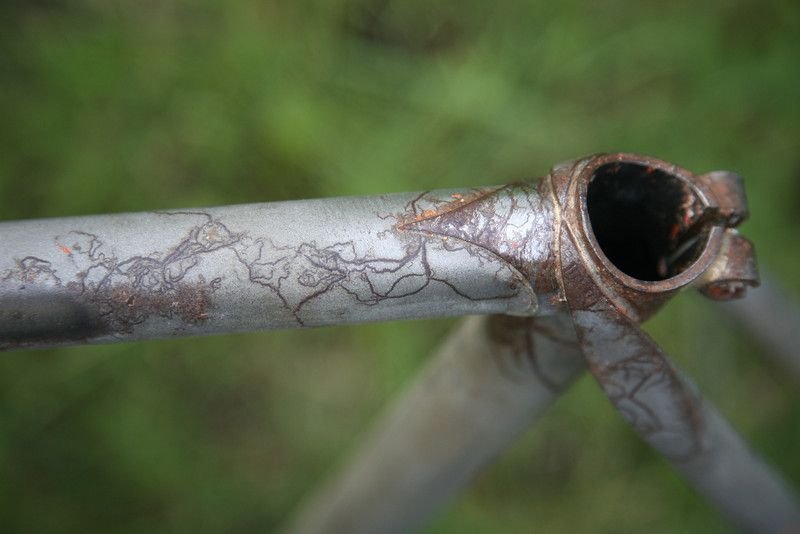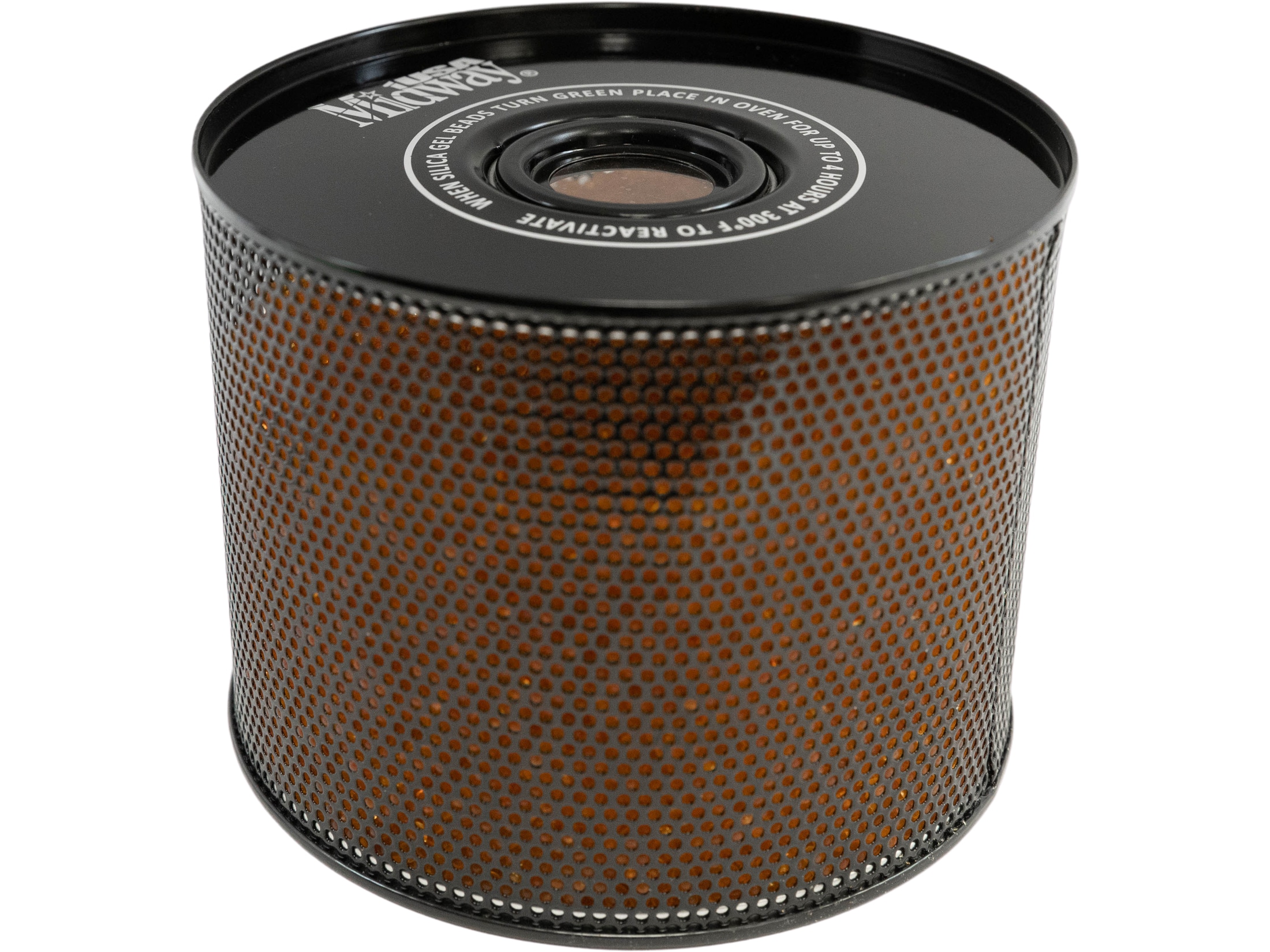Jokes aside. I am usually throwing a few patches of M-Pro-7 on some jag patches to de carbonize the barrel, this usually happens same day as shooting, I will usually chase it with a dry cotton patch. Some range days I come home and just throw the rifles in the safe
uncleaned and not touch them again for weeks or months. So I can see some residue being left in the barrel. The
safe is in a cold garage so could have some moisture. I do not use copper solvent or any harsh products, when I have scrubbed the barrels it was with a nylon brush or cotton patch, that's it. So bottom line no hard chemicals, many times left uncleaned,
cold and sometimes damp garage.
SM:
For what it is worth, here is my barrel cleaning/care protocol that I have used over many years, with good results (and from hard lessons learned). I am NOT suggesting that this is on the only way, but as we know in life, there is often more than one way to do most things correctly.
Prior to shooting:
1. Visually inspect the rifle, bolt face/lugs, muzzle device, scope/mounting system. Check tightness of any stock adjustments for length of pull, cheek piece knobs/etc.)
2. Swab out the bore with a dry, tightly fitting cotton patch to remove any lint, previously applied CLP (CLP/Break Free is my bias, due to years of use in the Army, comfort level of its protection of barrels, and excellent cold bore shot accuracy (There are no sighters in the President's Hundred match). I prefer the "parker hale" type jag and a wrapped cotton patch to increase the surface area for this task, as the "punch through" type has much less surface area contact.
3. Swab out the chamber with a Dewey coated pistol rod with two (2) 30-caliber cotton patches to remove any residue/lubricant.
4. Visually look down the barrel checking for any abnormalities (ok, so I'm a little ocd...)
5. Grease the locking lugs, cocking piece/firing pin contact areas with TW25B. Operate the bolt a few times to ensure distribution of the TW25B and confirm proper operation of the trigger. (RULE ONE: treat every firearm as if it were loaded)
During shooting:
1. Keep ammunition clean, dry, dust/sand free. My ammunition goes directly into magazines (internal or detachable), and never placed on the shooting table/surface where it can pick up dirt/sand/grass/etc.
After shooting:
1. I do my best to clean my barrels as soon as I get home from the range. "Later" often does not happen...
2. I remove the magazine, bolt, cover the scope lenses (either with caps, or with a clean towel, using rubber bands in a "figure 8"to hold it tightly and out of the way of the receiver/ejection port. Don't want to get solvent "spray" on expensive glass!
3. I have fitted bore guides for all of my rifles. This provides a better fit to the inner diameter of the receiver, seal in the chamber, and with enough length to prevent solvents from dripping down into the trigger mechanism, bedding area. I also put a small towel beneath the back end of the bore guide to protect the stock or my floor from dripping solvents.
4. I only used plastic coated, one piece cleaning rods at this time. Bore Tech seems to run more smoothly than Dewey over the years, YMMV... Won't get into the steel vs. coated arguments at this time. Keep the rod aligned with barrel during the stroking process. There are no extra points for "stroke speed" if you get what I mean when watching others.

5. I will punch through two wet patches with the punch through type jag and a loosely fitting patch straight through the muzzle into my waste bucket. This will remove the loose carbon fouling and wet the bore surface. I am very happy with Shooter's Choice (SC) bore solvent, and usually the gallon size will last a long time. I am aware of the many choices out there (too many, but hey, this is America!).
6. I will then use a bronze brush to clean out the barrel with Shooter's Choice. I will push it through the muzzle, apply the solvent over my garbage/bucket, and then stroke it back and forth 10 times, then reapply the SC and repeat. I am NOT so ocd that I remove the brush at the muzzle after every single pass. Got a life too... Some folks prefer nylon brushes for this step, but I just don't feel that I get enough "cleaning power" to clean out the carbon and initial copper fouling with them. NOTE: NEVER use a stainless steel bore brush. They WILL scratch the bore. I have confirmed this with my Hawkeye borescope. I will let my barrel "soak" for 2-5 minutes in SC while I clean the bolt, magazine, pistols, etc.
7. I will punch through a patch with SC to assess the level of work remaining. Black/grey residue is powder fouling. Blue residue is copper fouling. If I did not shoot too much and the patch is reasonably clean, I will then stop at this point. If there still is a lot of either black/blue, I will repeat the bronze brush/SC 10-20 strokes, verify with SC patch until I'm satisfied to the level. I no longer clean a barrel until "perfectly clean" as it unnecessary. Takes too much time, wastes too much resources, and with modern barrel steels, really is not needed.
7a. IF my barrel has been shot a lot, nor had a "deep cleaning" in some time, or is "new" to me, I will then ADD the use of copper solvent and nylon bore brush (the solvent does the work here by chemical reaction). I am currently very happy with Bore Tech Eliminator (BTE). Back in the day, Sweets 762 was the bomb, but damn, was it hard on the nostrils! Be advised that BTE is "basic" in pH and will degrade your skin. I will typically use a latex/nitrile glove when using this in quantity. 10/20 strokes, let it sit for 2-5 minutes, then punch through with a patch slightly wet with BTE until ALL the blue is gone. Once the patch is devoid of any blue, go to step 8. CAUTION: DO NOT LEAVE BTE (or any other copper solvent) in your barrel "overnight." I have found etching/scoring from past use.
7b. IF the barrel is not copper free by this point, or is an "old/pitted" gun, then I will use JB bore paste (BLUE label, NOT the Red label) with a "3/4" cut patch wrapped over an old/loose bronze brush" for the deepest of cleaning. I will stroke back and forth (stop the forward/backward stroke "half" the length of the brush otherwise the wrapped patch will unravel), for 10 times (at which time the patch will be very black). After 10 strokes, I will punch through a SC-patch, dry patch, then bore scope. I will repeat this process until all carbon and copper fouling is gone. Of course, a borescope is needed for this level of scrutiny, but hey, we do love our gadgets! I collect older military rifles, and 7b is often needed to get to the bare steel.
8. I will then punch through 2 patches with Gunscrubber to clean out the SC solvent (or JB bore paste) from the barrel. I will remove the bore guide, dry off any solvent, dry out the chamber as above for prior to shooting, and replace the bore guide.
9. At this point, I will then "coat" the bore with a wrapped patch with "9 dots" of CLP (patch saturation without dripping) with slow, even strokes several times and then out the muzzle. I will use that CLP-soaked patch for wiping down my bolt, etc.
10. I will coat the exposed steel surfaces of my firearms with a shaving brush with CLP (squeeze the brush tightly, apply some CLP to the center of the brush hairs) and presto, you will be able to get into all of the nooks and crannies of your investment. Wipe off the excess CLP with your handy oil-soaked/preservative rag.
Storage
1. I typically store all of my rifles muzzle down so that any fluids run into a medicine bottle top or rubber coaster, rather than into the bedding area.
2. I have a Golden Rod in my safe. I also have humidity/temperature gauges in the safe for peace of mind.
3. I have a Mitsubishi ductless system in my garage to maintain humidity to around the 50% level. This protects my vehicles, tools, and reloading equipment from the salt air/humidity here in Florida.
I hope that this helps.
longebow





/cdn.vox-cdn.com/uploads/chorus_image/image/67376508/Screen_Shot_2020_09_09_at_12.21.44_PM.0.png)
